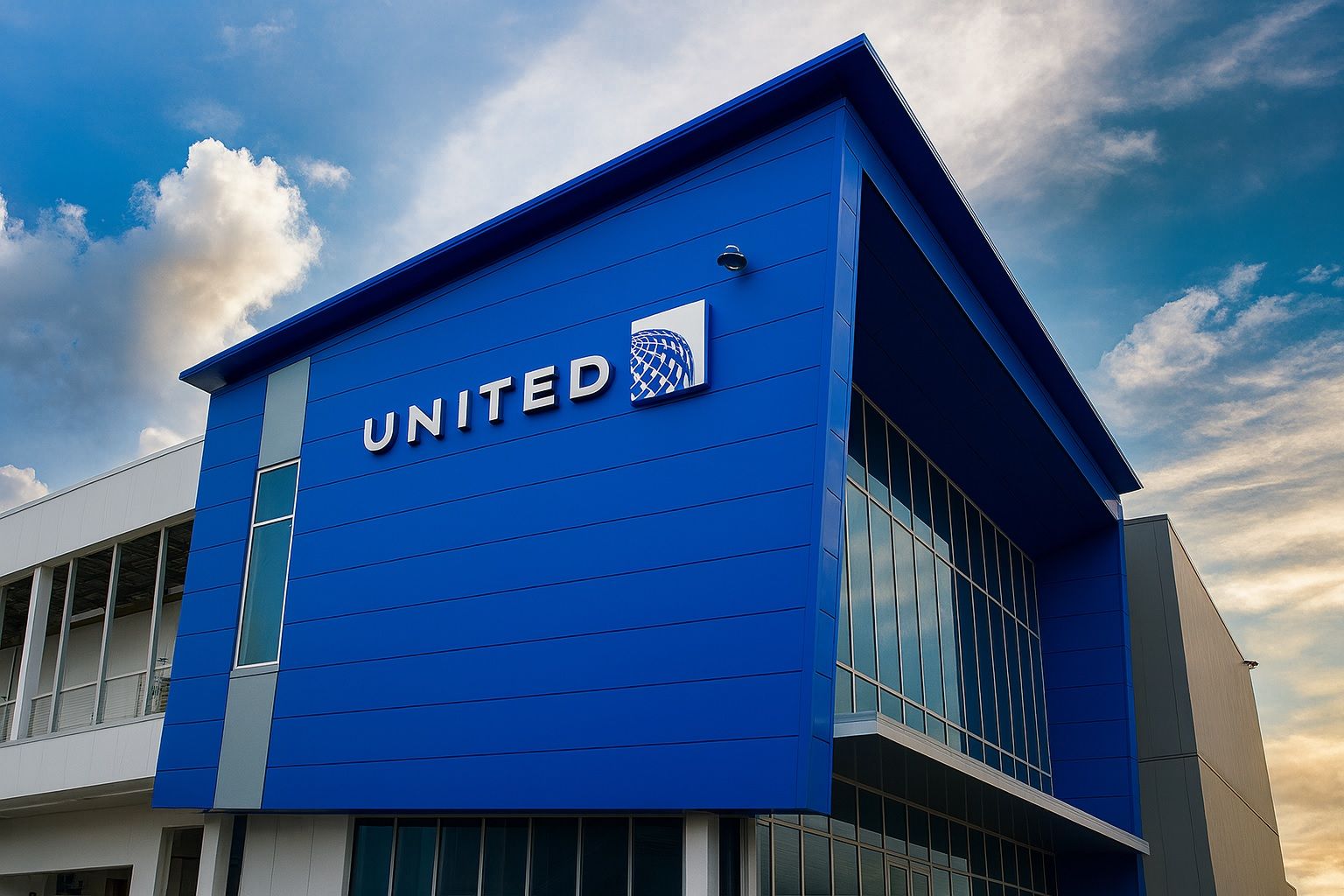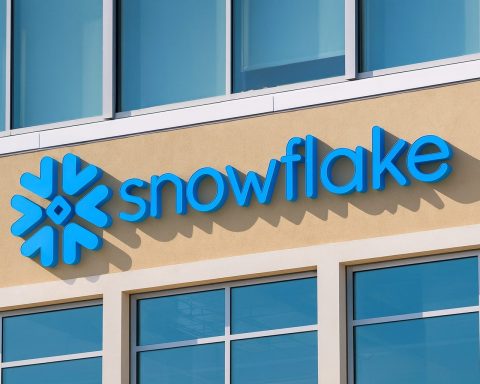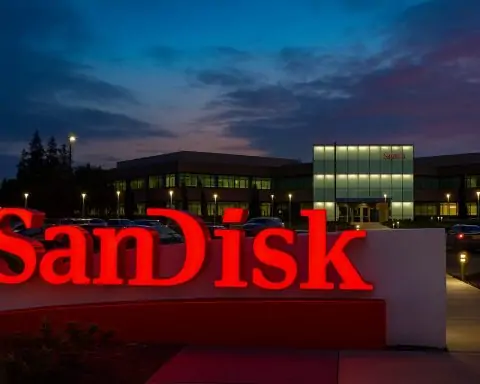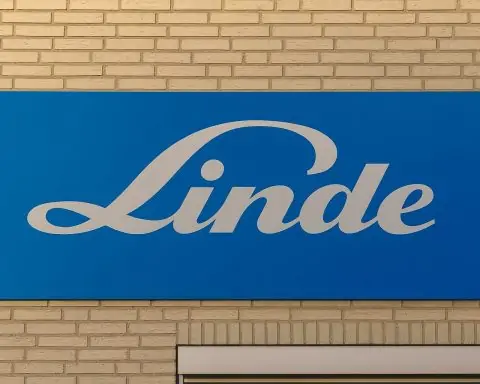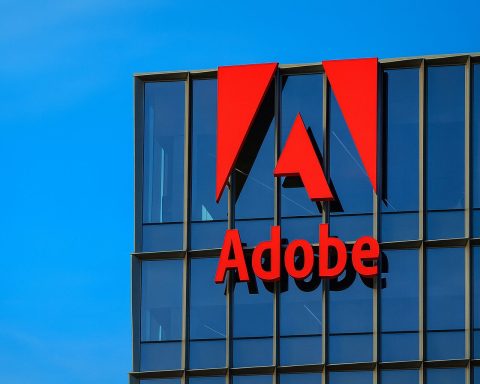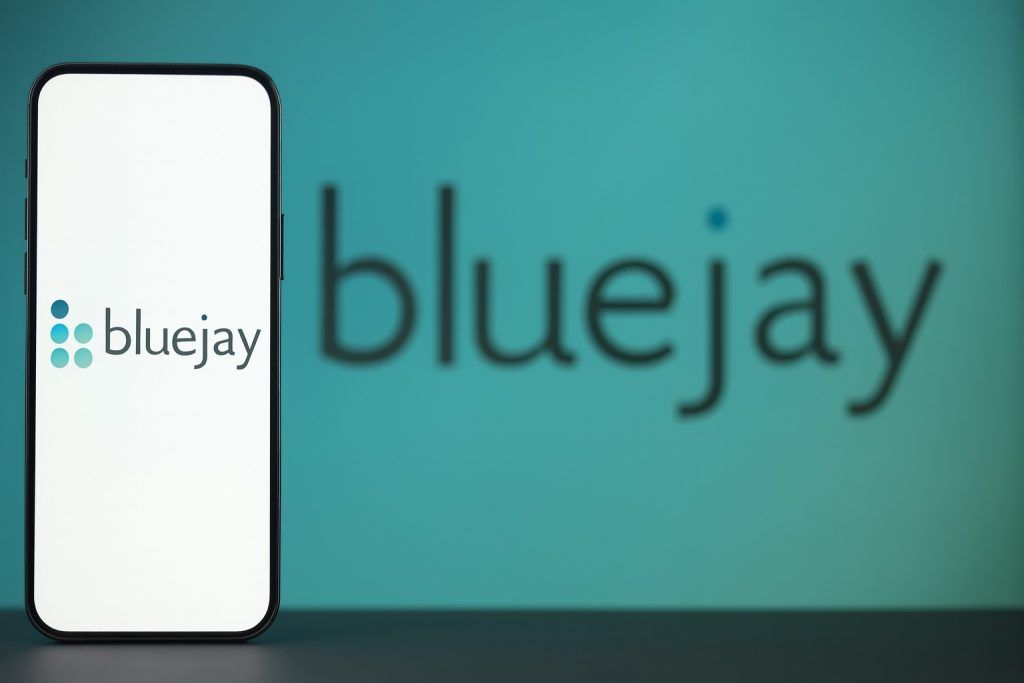- Ticker: UAL (NASDAQ), Component of DJIA & S&P 500 [1] [2]
- CEO: Scott Kirby (Chicago-based, aboard the Willis Tower) [3] [4]
- Market Cap: ~$31.3 billion, Shares outstanding ~324 M [5]
- Price: ~$98.09 on Oct 8, 2025 [6]; 52-week range $52.00–$116.00 [7]. 2025 YTD: resumed rally in Sept after midsummer dip.
- Valuation: Forward P/E ≈9.4 [8]; Price/Sales ≈0.54 [9]; high leverage (Total Debt/Equity ~202% [10]).
- Network: One of world’s largest carriers, flying to 383 destinations on six continents from hubs (e.g. ORD, DEN, SFO, EWR, IAH) [11] [12].
Stock Price & Recent Performance
As of market close Oct 8, 2025, UAL traded around $98.09 [13], a ~1.5% gain for the day. In early pre-market Oct 9, it had jumped ~6% to ~$104 [14]. Over the past week, UAL shares have rebounded from recent lows near ~$94 (Oct 2) to fresh highs around $99–100. The stock’s 6-month chart shows a rally to a mid-September peak (~$109) followed by a pullback; current technical indicators (see below) suggest mild momentum. UAL trades well above its pandemic lows and has outperformed some broader indices this year (its 52-week high is $116 [15]).
Image: United Airlines Airbus A321 at Chicago O’Hare – the hub airline is expanding international routes (Source: United PR)
Recent News & Developments (Past Week)
- Government Shutdown (Oct 1– ): The partial U.S. federal shutdown has not yet grounded U.S. air travel. TSA checkpoints and air traffic control remain “essential,” so flights keep operating [16]. However, delays are rising: by Oct 7 there were 3,000+ flight delays/day due to staffing cuts [17]. So far, airline stocks have been largely unfazed by the shutdown [18] – investors assume it will end without long-term damage. (Analysts warn a prolonged shutdown could hurt holiday travel, but early signals are mixed [19].)
- Earnings & Guidance: On Oct 9 Delta Air Lines reported blowout Q3 results (revenue/margins up sharply), sending Delta stock +5% [20]. United’s shares also jumped about 2–5% in sympathy [21], alongside peers American and JetBlue. Delta management raised its 2025 guidance to ~$6 EPS (above prior ~$5.8), further stoking optimism in the sector [22]. (United itself will report Q3 on Oct 15.) Last quarter (Q2), United earned $3.87 adj. EPS (beating $3.81 estimate) [23] but noted that airport constraints (esp. Newark) and soft yields will trim its Q3 profit. It now forecasts Q3 EPS $2.25–$2.75 (midpoint $2.50) vs. Street $2.60 [24].
- Operations & Routes: On Oct 9 United announced its Summer 2026 network expansion: new nonstop routes from Newark to Split (Croatia), Bari (Italy), Glasgow (Scotland), Santiago de Compostela (Spain), plus Reykjavík (Iceland) from DC and more flights to Tel Aviv [25]. These moves, along with United’s record Atlantic route count, underscore robust leisure demand and network growth. CEO Scott Kirby commented that “the world is less uncertain today” and expects a strong year-end, even as capacity tightness (e.g. grounded Spirit fleet) should support fares [26].
- Travel Trends: Travel demand remains strong, with premium cabins leading growth. U.S. carriers report that affluent passengers are still buying expensive seats, offsetting weakness at the low end [27]. For instance, United’s premium cabin revenue rose ~5.6% in Q2 vs. just ~1.1% growth in total passenger revenue [28]. That industry shift has kept margins healthier than expected.
- Regulatory/Other: The FAA is signaling staffing slowdowns under the shutdown, and a recent court agreed to reconsider airline fee regulations [29] (though these longer-term issues have yet to move markets this week).
Analyst Commentary & Forecasts
Wall Street remains bullish on UAL. A consensus of 17 analysts gives UAL a “Buy” rating [30]. Their average 12-month target is $120.64 (≈23% upside) [31]. Price targets range from ~$108 up to $149 [32] [33] – e.g. Susquehanna and Barclays at $115 (early Oct 2025) and Jefferies at $125 [34]. (Even JPMorgan and UBS had $131–149 targets in Sept [35].) The broad consensus (per MarketBeat) implies fair value well above $100 [36].
Analysts note UAL’s history of beating earnings: it topped estimates in each of the last four quarters (avg surprise ~+9%) [37]. Zacks Investment Research, for example, predicts another beat in Q3, estimating ~$2.64 EPS (down ~21% YoY) on revenue ~$15.27B (+2.9% YoY) [38]. However, they warn that global uncertainties (tariffs, inflation, the shutdown) could cap growth [39]. Delphi-like rating models (Zacks Rank #3/Hold, positive earnings “ESP”) tilt toward a beat [40].
Analyst commentary highlights: UBS’s Thomas Wadewitz noted last month that UAL’s fleet renewal should eventually cut costs; Susquehanna’s Stathoulopoulos emphasizes strong international routes. Overall, the near-term consensus is UAL can meet or exceed muted Q3 expectations, keeping upside momentum.
Fundamental Analysis
United’s fundamentals paint a mixed but improving picture. After pandemic losses, UAL’s revenues have rebounded: 2024 annual revenue was about $57.1B [41]. Profitability is lean: 2024 net income ~$2.6B on ~$74B assets [42]. Key metrics: P/E (TTM) ~9.7 [43] (cheap vs. historical norms), P/B ~2.3 [44], and Price/Sales ~0.54 [45]. Return on Investment (around 6.9%) and Equity (~4.4%) are modest [46].
A major concern is debt: UAL’s balance sheet remains highly leveraged, with Total Debt/Equity ~202% [47] (significantly higher than rivals). The company has been issuing bonds to finance new jets and its Continental merger remnant debt. This heavy debt load pressures margins, but also means Union’s risk is mitigated if demand holds. On the positive side, fuel costs are easing (management expects Q3 fuel spend down ~2% YoY [48]), and cost discipline (hedging, efficiency) has been better than earlier in the year.
Cash flow is solid: Morningstar reports free cash flow generation and a healthy fleet plan (new 737s/A321neos for capacity growth). UAL’s profitability is heavily tied to premium travel: as Reuters notes, United’s yields fell in Q2, but strong premium sales cushioned overall revenue [49]. Analysts expect UAL to leverage the holiday season and corporate travel rebound to eke out better margins in H2. On valuation, many see UAL as undervalued at under 10x earnings, given the airline industry’s recovery stage.
Technical Analysis
From a chart perspective, UAL stock has formed a recent higher-low near the mid-$90s and is approaching resistance at the $98–100 area. TipRanks data shows short-term moving averages above the current price (20-day EMA ~$99.5, 50-day EMA ~$98.1 [50]), implying overhead resistance near those levels. Pivot-point analysis (as of Oct 8) identifies support near ~$95.3 and ~$93.6, with resistance around ~$98.1 and ~$100.8 [51].
Momentum indicators are mixed: the MACD is slightly negative (-1.62, suggesting a mild bullish crossover) [52], and RSI is neutral (~42) [53] (neither overbought nor oversold). The stock’s 5-day average (~$95.4) is below price, but the 10- and 20-day averages (~$97.6 and $101.4) are above [54]. In sum, technical signals are neutral-to-bullish, indicating potential for a break above $100 if volume spikes (e.g. on earnings). However, profit-taking could appear near the $100 pivot.
Relative to competitors, UAL has lagged Delta’s rally (Delta is up ~25-30% YTD [55]) and roughly matched American and Southwest’s moves. If airlines indices push higher, UAL could follow – but its chart suggests key levels to watch are $95 (support) and $100–105 (resistance).
Competitor Comparison
United sits amid industry peers facing similar trends. Delta Air Lines (DAL) is outperforming: Delta’s Q3 results beat by a mile, its margins are leading, and its stock (Dow component) carries a higher valuation. Analysts consider Delta a “resilient” growth story even after its 2025 run [56]. Delta’s stronger balance sheet (lower debt) and lucrative credit-card segment give it an edge.
American Airlines (AAL) shares also rallied around the travel data, but AMR’s weaker liquidity and recent losses temper enthusiasm. For example, AAL recently warned of a wider Q3 loss [57], causing volatility. Southwest (LUV) and JetBlue (JBLU) are more domestically focused; JetBlue is restructuring and soared 2% on Delta’s news [58], while Southwest’s holiday strength is still an unknown. Overall, United trades cheaper than Delta and roughly in line with AAL (P/E ~10), reflecting its higher debt.
In terms of size and network, UAL is largest in international reach (more unique global destinations than any U.S. carrier [59] [60]) but competes head-to-head with all on domestic routes. The premium-travel shift benefits legacy carriers like UAL and DAL more than low-cost peers (Spirit/Frontier), which are in distress.
Public Sentiment & Institutional Positions
Investor sentiment is cautiously optimistic. UAL’s analyst consensus is a Buy [61], and survey polls (e.g. AAII, IBD) show more bulls than bears on airline stocks. On social media and finance forums, traders cite rising holiday bookings and pent-up business travel as bullish signs, though some fear oil prices or shutdown risk.
Insider/Institutional Activity: There have been notable insider sales recently. For instance, United President Brett Hart and several EVPs sold tens of thousands of shares this quarter [62] – though insiders have sold in past cycles too. On the institutional side, recent SEC filings show heavy repositioning: Fidelity (FMR LLC) added ~3.6 M shares in Q2 (a +70% boost) [63], signaling conviction. Meanwhile, some hedge funds trimmed UAL – e.g. Alyeska and Qube each cut positions by 80–90% [64]. Overall, 459 institutions increased UAL in Q2 and 370 decreased [65], reflecting a mixed but generally strong ownership base (including Primecap, Renaissance, etc., albeit some net sellers like Goldman [66]).
Sentiment appears more bullish among retail traders now than a few months ago – aided by upgrades and price-target raises. The recent stock rally and high-profile expansions (new routes) are positive cues. But any hint of slowing economy or protracted shutdown could quickly turn sentiment defensive.
Forward Outlook
Looking ahead, the consensus outlook is cautiously positive. Analysts’ targets (mid $110s–$120s) imply upside of ~20–30% from current levels [67] [68]. Key drivers will be Q3 earnings (Oct 15), the upcoming holiday travel season, and macro factors (Fed rate cuts, oil prices, shutdown resolution). If United reports a robust Q3 (meeting or beating ~$2.6 EPS) and travel demand holds, expect continued momentum into year-end. The stock could test the $110–120 zone if holiday booking trends and pricing power remain strong.
Risks are clear: a deeper economic slowdown or prolonged government impasse could dampen corporate/business travel, hurting load factors. Also, labor cost pressures and debt servicing will cap profits. Technically, a failure above $100 could signal consolidation. For now, models like TipRanks classify UAL as a Hold/Moderate Buy [69] – reflecting the balance of upside potential vs. short-term headwinds.
Outlook: Given the “Goldilocks” scenario of stable growth (per TS2 market analysis [70]) and healthy consumer spending on travel, United is expected to continue recovering. We forecast UAL reaching ~$115–125 in the next 6–12 months as demand-driven revenue climbs, barring shocks [71] [72]. Our rationale: solid holiday travel bookings, a premium-cabin strategy, and any resolution to the shutdown would likely propel shares higher. Conversely, watch the $95-$100 technical zone for near-term support; a sustained break above ~$100 could confirm the next leg up.
Sources: All data and quotes are drawn from financial news and research (Reuters, Marketscreener/TS2, Nasdaq/Zacks, QuiverQuant, MarketBeat, Barchart, and official PR releases) [73] [74] [75] [76] [77] [78] [79] (citations in text).
References
1. en.wikipedia.org, 2. www.marketbeat.com, 3. www.reuters.com, 4. en.wikipedia.org, 5. www.reuters.com, 6. www.reuters.com, 7. www.reuters.com, 8. www.reuters.com, 9. www.reuters.com, 10. www.reuters.com, 11. www.reuters.com, 12. en.wikipedia.org, 13. www.reuters.com, 14. stockanalysis.com, 15. www.reuters.com, 16. ts2.tech, 17. ts2.tech, 18. ts2.tech, 19. ts2.tech, 20. ts2.tech, 21. ts2.tech, 22. ts2.tech, 23. www.reuters.com, 24. www.reuters.com, 25. www.prnewswire.com, 26. www.reuters.com, 27. www.reuters.com, 28. www.reuters.com, 29. www.reuters.com, 30. www.marketbeat.com, 31. www.marketbeat.com, 32. www.quiverquant.com, 33. www.marketbeat.com, 34. www.quiverquant.com, 35. www.quiverquant.com, 36. www.marketbeat.com, 37. www.nasdaq.com, 38. www.nasdaq.com, 39. www.nasdaq.com, 40. www.nasdaq.com, 41. en.wikipedia.org, 42. en.wikipedia.org, 43. www.reuters.com, 44. www.reuters.com, 45. www.reuters.com, 46. www.reuters.com, 47. www.reuters.com, 48. www.nasdaq.com, 49. www.reuters.com, 50. www.tipranks.com, 51. www.tipranks.com, 52. www.tipranks.com, 53. www.tipranks.com, 54. www.tipranks.com, 55. ts2.tech, 56. ts2.tech, 57. carboncredits.com, 58. ts2.tech, 59. www.prnewswire.com, 60. en.wikipedia.org, 61. www.marketbeat.com, 62. www.quiverquant.com, 63. www.quiverquant.com, 64. www.quiverquant.com, 65. www.quiverquant.com, 66. www.quiverquant.com, 67. www.quiverquant.com, 68. www.marketbeat.com, 69. www.tipranks.com, 70. ts2.tech, 71. www.quiverquant.com, 72. www.marketbeat.com, 73. www.reuters.com, 74. www.nasdaq.com, 75. ts2.tech, 76. www.prnewswire.com, 77. www.quiverquant.com, 78. www.marketbeat.com, 79. www.tipranks.com
